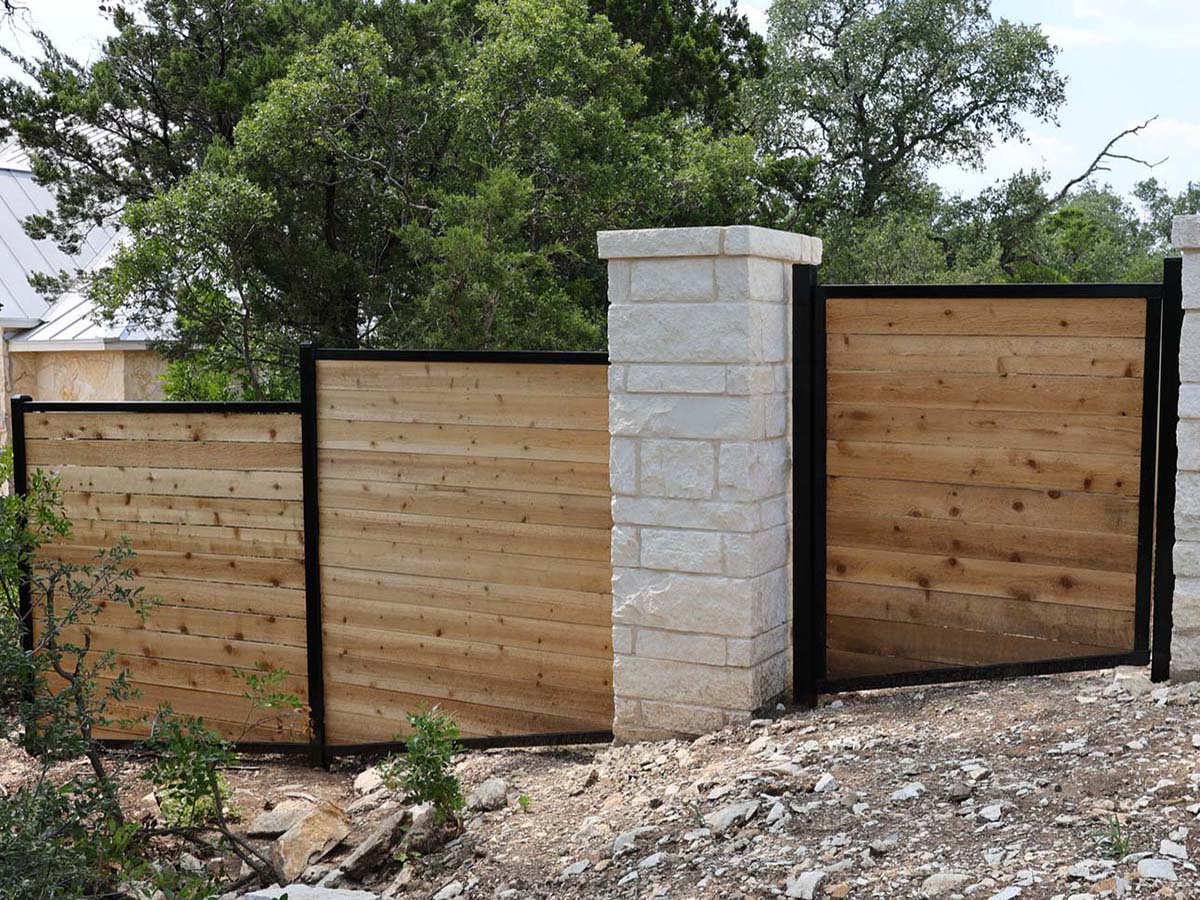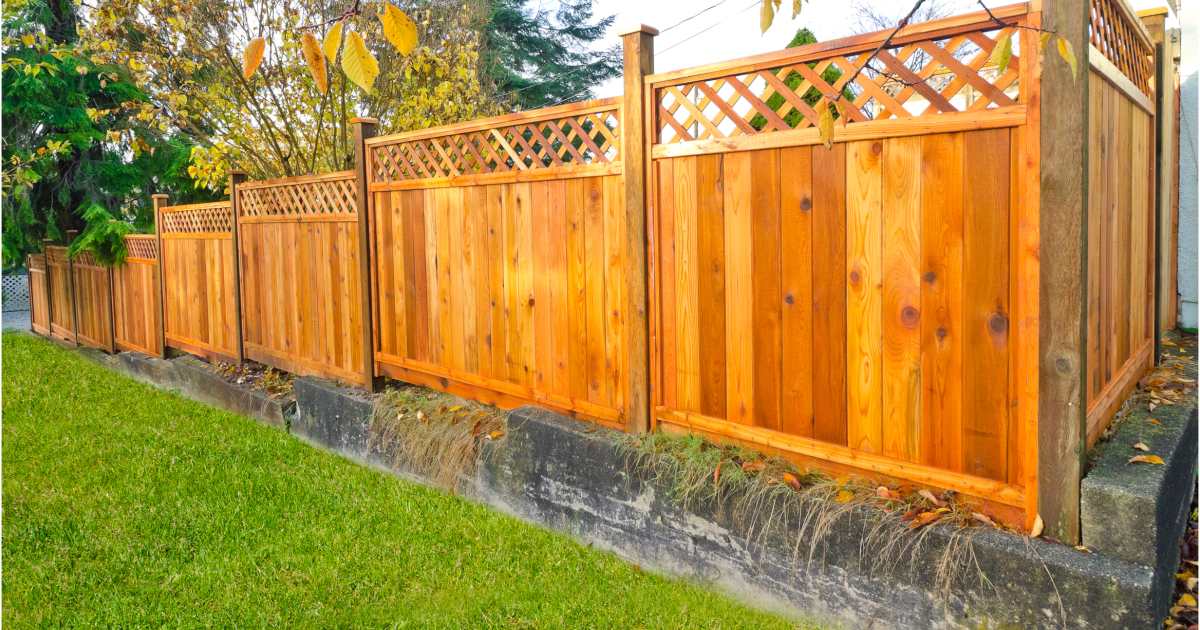All Categories
Featured
Mounting a fencing on your building can include personal privacy, security, and aesthetic charm, but prior to you start excavating holes and establishing messages, it's necessary to recognize whether you require a permit. The kind of fencing you plan to mount, where it will be put, and regional zoning legislations can all affect the permitting process. Not getting the essential licenses might lead to fines or the requirement to remove the fence. Right here's what you need to understand to make sure a smooth setup process.
Why Are Allows Essential for Fence Installation? Authorizations are essential for making certain that your fence follows neighborhood zoning legislations and building ordinance. These regulations aid make certain the safety and security of your property and the surrounding area. In addition, allows protect against disagreements with neighbors or local authorities, particularly when it concerns residential property lines, height limitations, and general design.
In a lot of cases, neighborhood authorities call for authorizations to control points like visibility at intersections or the closeness of a fencing to public spaces like walkways or roads. Permits additionally aid ensure that fences are installed appropriately and securely, specifically when it involves high fencings or one-of-a-kind products.
Usual Kinds Of Licenses for Fence Setup. The sort of fencing you wish to set up and your place will certainly figure out which licenses are called for. Right here are the most common types:
Structure Permit. A structure authorization is usually needed for fencings that surpass particular height restrictions (typically over 6 feet), lie near a public road or walkway, or are made from specific materials. Building allows make sure that the framework fulfills neighborhood building codes, including safety and security requirements.
Zoning Authorization. Zoning licenses are usually required to ensure that your fencing adheres to neighborhood zoning legislations. Zoning legislations can define where a fence can be positioned on your home (e.g., along building lines or ahead yards), as well as established limits on fence elevation. These regulations are designed to prevent obstructions that might influence traffic safety or neighborhood visual appeals.
![]()
Obstacle Permit. In some locations, you might require an obstacle license to place your fencing a specific distance from residential or commercial property roads, lines, or energies. Troubles are planned to preserve appropriate area between frameworks and property borders, reducing potential conflicts with next-door neighbors or public framework.
Homeowners Organization (HOA) Authorization. If your residential property is part of a community regulated by a Homeowners Organization (HOA), you will likely need approval from the HOA before mounting a fencing. HOA guidelines frequently govern the design, height, materials, and also shade of fences, making certain that they match the overall aesthetic of the area.
The Process for Obtaining a Fence Authorization. To get a fencing authorization, you commonly need to contact your regional city or region office. The majority of locations have a building department or planning office where you can obtain authorizations. The procedure entails completing an application and giving detailed details regarding your recommended fence, consisting of:
Fencing style (products, height, design) Location on the residential or commercial property. Property line information (for precise positioning) In a lot of cases, a website plan showing the proposed fence's placement will be needed. You may likewise need to pay a permit cost, which can vary based upon area and the complexity of the job.
As soon as you submit your application, the regional authorities will examine it to make sure the fencing follows neighborhood guidelines. Relying on your place, you might likewise require to schedule an inspection or allow for a building study.
When Do You Not Required an Authorization? In many cases, a license may not be called for. Typically, you may not require an authorization if:
![]()
The fence is under a particular height (commonly 3-4 feet for front lawns) You're changing an existing fencing with the same type and height. The fencing is temporary (such as a garden fencing) It's constantly a good concept to check with your neighborhood building or zoning division to confirm the requirements, as guidelines can vary.
Effects of Not Obtaining a Permit. Falling short to get the required licenses can cause various concerns. The most usual repercussion is being fined or asked to remove the fencing. In some cases, you might require to re-install the fence according to code, which can be taxing and pricey. In addition, not adhering to the correct allowing process can produce issues with next-door neighbors, particularly if your fencing extends past your building line or doesn't satisfy elevation or style demands.
Conclusion. Before installing a fence, make sure you're aware of the neighborhood laws and whether you need a permit. By getting the appropriate permits, you'll make certain that your fencing is lawfully certified, safe, and free from future difficulties.
Why Are Allows Essential for Fence Installation? Authorizations are essential for making certain that your fence follows neighborhood zoning legislations and building ordinance. These regulations aid make certain the safety and security of your property and the surrounding area. In addition, allows protect against disagreements with neighbors or local authorities, particularly when it concerns residential property lines, height limitations, and general design.
In a lot of cases, neighborhood authorities call for authorizations to control points like visibility at intersections or the closeness of a fencing to public spaces like walkways or roads. Permits additionally aid ensure that fences are installed appropriately and securely, specifically when it involves high fencings or one-of-a-kind products.
Usual Kinds Of Licenses for Fence Setup. The sort of fencing you wish to set up and your place will certainly figure out which licenses are called for. Right here are the most common types:
Structure Permit. A structure authorization is usually needed for fencings that surpass particular height restrictions (typically over 6 feet), lie near a public road or walkway, or are made from specific materials. Building allows make sure that the framework fulfills neighborhood building codes, including safety and security requirements.
Zoning Authorization. Zoning licenses are usually required to ensure that your fencing adheres to neighborhood zoning legislations. Zoning legislations can define where a fence can be positioned on your home (e.g., along building lines or ahead yards), as well as established limits on fence elevation. These regulations are designed to prevent obstructions that might influence traffic safety or neighborhood visual appeals.

Obstacle Permit. In some locations, you might require an obstacle license to place your fencing a specific distance from residential or commercial property roads, lines, or energies. Troubles are planned to preserve appropriate area between frameworks and property borders, reducing potential conflicts with next-door neighbors or public framework.
Homeowners Organization (HOA) Authorization. If your residential property is part of a community regulated by a Homeowners Organization (HOA), you will likely need approval from the HOA before mounting a fencing. HOA guidelines frequently govern the design, height, materials, and also shade of fences, making certain that they match the overall aesthetic of the area.
The Process for Obtaining a Fence Authorization. To get a fencing authorization, you commonly need to contact your regional city or region office. The majority of locations have a building department or planning office where you can obtain authorizations. The procedure entails completing an application and giving detailed details regarding your recommended fence, consisting of:
Fencing style (products, height, design) Location on the residential or commercial property. Property line information (for precise positioning) In a lot of cases, a website plan showing the proposed fence's placement will be needed. You may likewise need to pay a permit cost, which can vary based upon area and the complexity of the job.
As soon as you submit your application, the regional authorities will examine it to make sure the fencing follows neighborhood guidelines. Relying on your place, you might likewise require to schedule an inspection or allow for a building study.
When Do You Not Required an Authorization? In many cases, a license may not be called for. Typically, you may not require an authorization if:

The fence is under a particular height (commonly 3-4 feet for front lawns) You're changing an existing fencing with the same type and height. The fencing is temporary (such as a garden fencing) It's constantly a good concept to check with your neighborhood building or zoning division to confirm the requirements, as guidelines can vary.
Effects of Not Obtaining a Permit. Falling short to get the required licenses can cause various concerns. The most usual repercussion is being fined or asked to remove the fencing. In some cases, you might require to re-install the fence according to code, which can be taxing and pricey. In addition, not adhering to the correct allowing process can produce issues with next-door neighbors, particularly if your fencing extends past your building line or doesn't satisfy elevation or style demands.
Conclusion. Before installing a fence, make sure you're aware of the neighborhood laws and whether you need a permit. By getting the appropriate permits, you'll make certain that your fencing is lawfully certified, safe, and free from future difficulties.
Latest Posts
Get the very best Hyundai Bargains at Hyundai of Akron
Published Apr 20, 25
1 min read
Secure Your Future with WyHy's Unique Certificate Options
Published Apr 20, 25
1 min read
Maximizing Your WyHy Monitoring Account
Published Apr 20, 25
1 min read